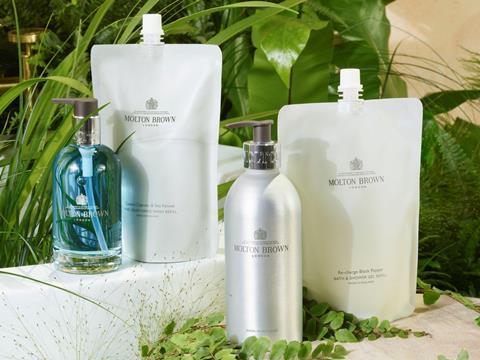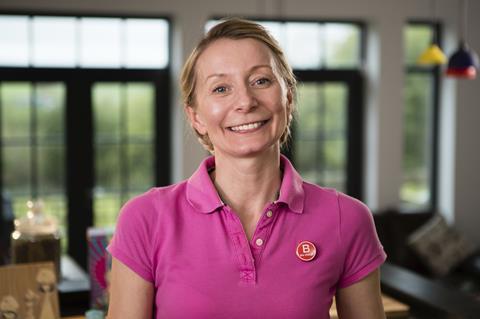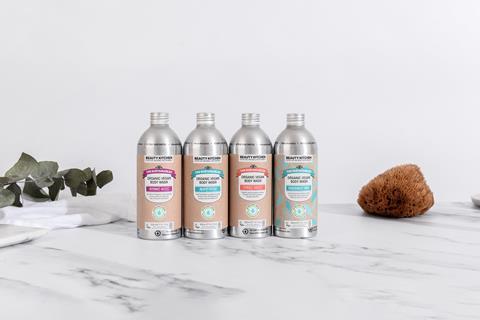
Since the European Commission announced revisions to the Packaging and Packaging Waste directive and WWF published a position paper including a framework for reuse systems, how has the cosmetics and personal care sector reacted? Journalist Frances Butler takes a look into the developments in this area.
In November 2022, the European Commission announced its planned revisions to the Packaging and Packaging Waste directive including reuse and refill targets, aiming towards a target to reduce 15% of packaging waste by 2040 per member state per capita, proposing that “companies will have to offer a certain percentage of their products to consumers in reusable or refillable packaging” and there will be “some standardisation of packaging formats and clear labelling of reusable packaging.”
The same month, WWF published a position paper setting out a framework for scaling sustainable reuse systems for plastic packaging, focusing on reducing plastic waste but with a secondary goal of reuse systems which complement strategies such as phasing out single-use plastics where possible. The NGO claimed “scaling up European reuse systems by 20% by 2027 would save 1.3 million tonnes of emissions, almost 2.5 billion cubic metres of water, and 10 million tonnes of materials every year”, but cited high entry costs for current reuse solutions as a restriction.
First steps
In 2021, US based cosmetics brand Izzy spoke to us about its refillable mascara solution. The primary packaging for Izzy’s Zero Waste Mascara BLK is a stainless steel tube designed to be cleaned and refilled “over a 10,000 times”, contained in a reusable shipper. The consumer can then use the shipper to return the empty mascara tube to the company, where it is cleaned, refilled and sent back to the consumer.
There are also refill options available via either a one-time purchase or subscription. Founder Shannon Goldberg claims the mascara has “a 78% smaller carbon footprint after 25 refills”, with all manufacturing taking place within a 400-mile radius and the water from the cleansing process being reused.
In January 2023, Quadpack announced its refillable compact with wooden casing and a twist system to separate the base and lid. The base contains a magnet designed to hold a refillable godet in place and enable separation for recycling, with a recess designed to allow users to extract the godet and replace it with a filled version.
Major deodorant companies have begun using reusable and refillable packaging, with Dove launching its first refillable solution in February last year. The stainless steel case is designed to be refilled until its end of life, cutting down on the disposal of single-use packaging.
The Body Shop introduced a refill scheme for its shampoo, conditioner, shower gel and handwash products, stating: “we’ve rolled out refill stations across 720 of our stores globally and we are launching a further 130 in 2023.”
Making reuse work
Another cosmetics company offering refill products is Kao, which states it has over 380 refill products, modified according to bottle sizes and viscosity of contents, and has made packaging a key element of its global ESG strategy, aiming to achieve net zero waste for plastic packaging by 2040, and negative waste for plastic packaging by 2050.
One of refill products is the Raku-raku Eco Pack Refill, used for refilling high viscosity products such as body soap, reportedly reducing CO2 emissions generated throughout the manufacturing, use, and disposal stages “by about 80% compared to rigid containers.”

Asked about the challenges when developing reusable and refillable packaging in the cosmetics industry, Martin Uellner, vice president of research and development at Kao’s Europe Research Laboratories, points out that in Japan, refills have already become an industry standard and that Kao, as well competitors, are selling 80% of their personal care and household products as a refill.
“There have been several challenges, especially creating a truly sustainable refill solution, as currently, refills are often harder to recycle. Refills are still expensive to produce so investment is not yet attractive to many companies, which makes pricing challenging. Consumers want to act sustainably without compromising on quality, user experience or price,” he points out.
Given these challenges, how can reusable packaging reduce the carbon footprint and use of materials?
Uellner explains that this is hard to calculate as a refill needs to be compared to the individual primary pack it substitutes.
“Looking at the refill pouches we develop at Kao, on average you save around 70% of plastic versus a standard primary pack.”
Speaking of the carbon footprint, according to OECD, plastics have a significant carbon footprint and contribute 3.4% of global greenhouse gas emissions throughout their lifecycle - so every piece of packaging that is not produced significantly supports efforts to fight global warming.
“When looking at materials, it is important to consider the impact of production, transportation and lifecycle. Plastic has a benefit as it is often much lighter and has a lower energy consumption than many of the alternatives,” he adds.
“Therefore, it is a case-by-case decision if plastic, aluminium, glass, or other materials should be used. This depends on the product, the transportation distance, the level of recycling infrastructure in various countries and many other factors.”

Appealing to consumers
Consumers can be hard to please, and Martin Uellner highlights the importance of creating packaging that consumers love to use.
“Refills are not easy to handle. You want packaging that can be completely emptied and does not spill. Our research and development team in Japan has consistently improved the refill packs and has created a unique nozzle, enabling an easy-to-handle, clean and efficient refill process for the consumer. Kao is holding a patent for this technology.”
He explains that one specific challenge was to change the typical pouch shape into a very compact form to reduce head space and have a stable base.
“This has been achieved by changing the pouch from a classic triangle shape to a cylindric shape with a flat top sheet and a special flat spout construction.”
The company has plans to scale up and introduce more refill solutions into its portfolio, especially in the salon and the luxury sector.
“Refills offer a big benefit to salon owners as they produce less waste and are easy to store. For our British boutique brand Molton Brown we have just launched our Infinite Refill bottle, an aluminium bottle that can be refilled with a range of our bath and body products.”
Uellner believes that from an ESG point of view, refills have a clear advantage and are an important building block to reducing plastic packaging, but reiterates that companies need to win consumers’ hearts. He says:
“Using refills needs to become a habit but should also be enjoyable. The packaging needs to look attractive, come at an attractive price point, and create a positive user experience.”
He adds that ”this has been the success model in Japan and I am convinced we can be successful with refill packaging in other markets as well. But it needs all players in the cosmetics industry to join forces. The industry and consumers need to drive the change together.”
Looking towards the future, he points out that to address the aim of zero waste, we need to investigate various options: “Compacting products so they need less packaging, waterless solutions like soap bars that can be packed in paper instead of plastic – or turning a refill pack into the primary pack.”

Breaking the status-quo
Making progressive changes to current systems, such as creating a “universal, professionally-refillable” reusable packaging platform is the brainchild of Reposit, a reusable packaging platform created by Jo and Stuart Chidley, the founders of sustainable beauty brand Beauty Kitchen. Reposit leases packaging to brands, provides standardised reusable packaging made from stainless steel, aluminium and glass, and is aiming to coordinate retailer engagement and implementation of a nationwide network for return points, washing and reuse.
Jo Chidley highlights that the systemic changes required to shift from a take-make-waste system that has been “perfectly designed to make profit and waste over the last 70 years” can only be achieved with collaboration.
“The barriers that need to be overcome include moving together to standardised smart reusable packaging-as-a-service and shared investment in a reuse platform that is consumer centric, including convenient return locations, consumer rewards, reverse logistics and washing facilities. From our work to date the innovation required is not technically challenging. In our experience businesses are willing to collaborate on systemic change and the momentum is building.”
Reusable and refillable packaging has many sustainability benefits, as she points out.
“Ultimately reuse keeps our planet’s limited resources flowing in continuous cycles and at scale, which generates the consumer behaviour change and return rate.”
She concedes that packaging designed for durability and reuse will often have higher carbon emissions for its first use, but highlights the fact that sustainability should be measured over its lifetime, using future input values and considering every other element of the LCA including waste and impacts on biodiversity.
“With the right standardisation and system design, with local returns, washing and reuse, reusable and refillable packaging should deliver lower emissions and waste.”
Chidley describes breaking the status-quo of a well-designed and profitable single-use system as the biggest challenge to overcome.
“Whilst many individuals and some businesses believe that reuse is the correct long-term answer, short-term financial pressures make collaboration and shared investment without legislation challenging. Systemic change is hard, it requires real innovation, collaboration and long-term commitment.”

Standardisation is key
Reposit provides standardised reusable packaging and leases packaging to brands. This can make a difference, as she highlights.
“If reusable packaging is developed to only be reusable for one product, brand or organisation it is massively less likely to be reused. If each standardised packaging type could be reused on 100 different products filled in many different factories in many different locations reuse could be guaranteed.”
Chidley states that the packaging-as-a-service means ”the item can be leased for a very similar cost to a standard bottle. The lease fee includes the reverse logistics and washing cost, removing the complexity and cost from the user.”
Reposit is working with a range of brands, retailers and global packaging suppliers to build a universal, professionally-refillable, reusable packaging platform, starting in the UK to build a globally scalable model, and Jo Chidley concludes with a call to action:
“We are working with WRAP and the UK Plastic Packaging Pact on a series of workshops to engage as many collaborators as possible ahead of a shared investment in implementing the system. You can expect to see it in action in some major retailers with major brands soon and we are calling for more to join the movement.”
If you liked this article, you might also enjoy:
The L’Oréal approach to packaging sustainability
What steps is Apple taking to make its packaging more sustainable?
How did Brazil achieve its 100% aluminium can recycling rate – and can it be replicated in the EU?
Experts have their say on the EU’s Packaging and Packaging Waste Directive revisions





















No comments yet